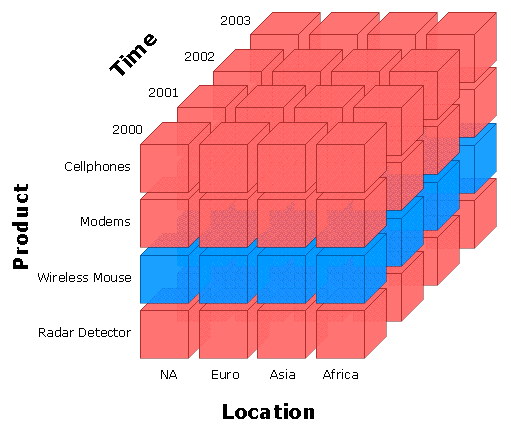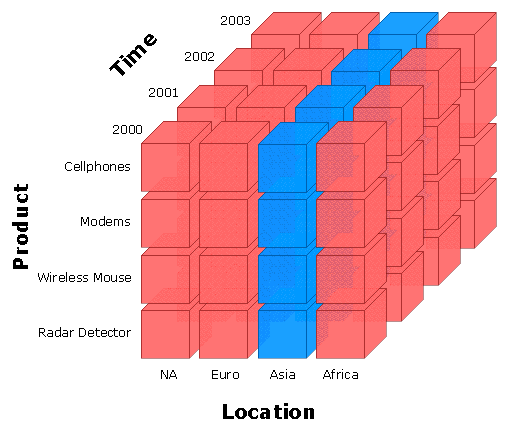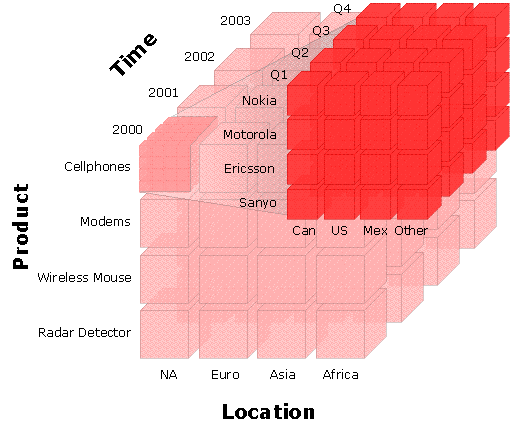Objectives
The objectives of this section are:
to introduce tools used for multidimensional data analysis
to explain the basic concepts of OLAP
Outcomes
By the time you have completed this section you will be able to:
define OLAP,
and understand it’s capabilities.
Slicing
A slice in a multidimensional array is a column of data corresponding to a single value for one or more members of the dimension. Slicing is the act of divvying up the cube to extract this informa tion for a given slice. It is important because it helps the user visualize and gather information specific to a dimension. When you think of slicing, think of it as a specialized filter for a particular value in a dimension. For instance, if a user wanted to know the total number of Wireless Mice sold over the whole dataset time space (2000-2003), the user would perform a horizontal slice as shown in Figure 4.
tion for a given slice. It is important because it helps the user visualize and gather information specific to a dimension. When you think of slicing, think of it as a specialized filter for a particular value in a dimension. For instance, if a user wanted to know the total number of Wireless Mice sold over the whole dataset time space (2000-2003), the user would perform a horizontal slice as shown in Figure 4.
Figure 5 shows the slicing that filters the information so that we have only the data for ASIA for all products and for all the years.

Dicing
Dicing is similar to slicing but it works a little bit differently. When one thinks of slicing, filtering is done to focus on a particular attribute, dicing on the other hand is more a zoom feature that selects a subset over all the dimensions but for specific values of the dimension. 
This tool is very useful in allowing the user to get more detailed information on what goes in on a smaller scale.
For instance, Figure 6 shows a graphical representation of dicing for a particular produce, over a specific time span for a particular region. The subset shows the Cell phone market, in North America only for the year 2000.
It incorporates the drilling technique previously defined. As one can see in Figure 6, cellphones are subdivided and we use a lower level in the hierarchy and get information for the various types of cellphones.

